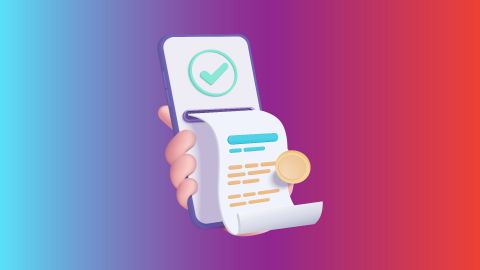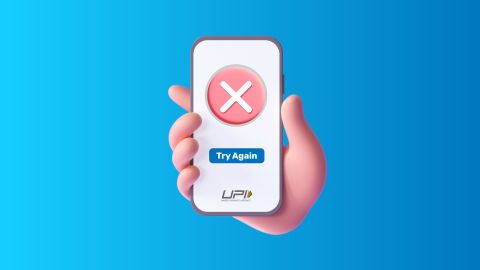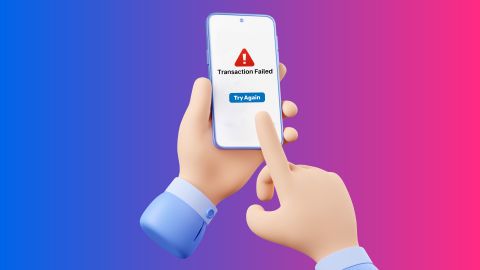Uncover how solar cells transform sunlight into power. Dive into the technology behind solar cells and their advantages in sustainable energy solutions.
Introduction to Solar Cells
-
What is solar cells
Solar cells are devices that convert sunlight directly into electricity. They are also called photovoltaic (PV) cells, and their main function is to produce power from sunlight. Solar cells are widely used in homes, businesses, and even space applications to generate clean, renewable energy. Solar cells are made of materials like silicon that absorb sunlight and create electric charges. These charges then move within the cell, creating electricity. This energy can be used to power devices, charge batteries, or supply electricity to an entire home.
Solar cells convert sunlight into electricity efficiently and reliably. Similarly, Bajaj Finserv ensures your electricity bill payments are seamless and dependable. With Bajaj Pay, you can securely handle all your payments, reflecting the same trust and efficiency as solar technology.Key Components of a Solar Cell
Solar cells consist of the following essential parts:- Semiconductor Layer: Usually silicon, it absorbs sunlight to generate electricity.
- Conductors: Wires or metal strips help transfer electricity produced in the cell.
- Glass Cover: Protects the cell from environmental damage like dust and water.
- Anti-Reflective Coating: Ensures maximum sunlight absorption.
- Back Sheet: Provides insulation and shields the cell from external conditions.
How Solar Cells Work: The P-N Junction and Electric Field
Solar cells rely on a crucial part called the P-N junction. This is formed when two semiconductor layers, one positive (P-type) and one negative (N-type), are joined together.
When sunlight hits the solar cell, it excites electrons in the semiconductor material. The electric field at the P-N junction directs these electrons, creating a flow of electricity. This electricity is then captured and sent through wires to power various devices or charge batteries.The Role of Sunlight in Solar Power Generation
Sunlight is the primary energy source for solar cells. The following aspects of sunlight are essential for generating electricity:- Intensity: The brighter the sunlight, the more electricity a solar cell can produce.
- Duration: Longer sunlight exposure increases energy output.
- Angle: Proper positioning ensures optimal sunlight absorption.
The Process of Electricity Flow in Solar Cells
The electricity flow in a solar cell involves several steps:- Absorption: The cell absorbs sunlight, exciting the electrons in the semiconductor.
- Separation: The electric field separates positive and negative charges.
- Collection: Conductors transfer the charges, creating a current.
- Usage: The current flows to power devices or store energy in batteries.
Applications of Solar Cells in Modern Technology
Solar cells are used in various applications, such as:- Residential Use: Powering homes and reducing electricity bills.
- Commercial Use: Providing energy for offices and industries.
- Transportation: Solar-powered cars, boats, and aircraft.
- Space Technology: Powering satellites and space missions.
Advantages and Limitations of Solar Cells
Advantages
- Renewable and eco-friendly.
- Reduces electricity costs.
- Minimal maintenance required.
Limitations
- High initial installation cost.
- Efficiency depends on sunlight availability.
Future of Solar Technology
Solar technology continues to evolve, with advancements like higher-efficiency cells and flexible solar panels. Researchers aim to develop cheaper and more sustainable materials to make solar power accessible to all.Conclusion
Solar cells are shaping a sustainable future by providing clean energy. Whether you're saving on electricity bills through solar power or managing payments using Bajaj Pay, adopting modern solutions ensures convenience and sustainability.
-
Recharge and Pay Bills
Mobile Prepaid
Mobile Postpaid
Broadband Bill Payment
Electricity Bill Payment
Bajaj Finserv App for All Your Financial Needs and Goals
Trusted by 50 million+ customers in India, Bajaj Finserv App is a one-stop solution for all your financial needs and goals.
You can use the Bajaj Finserv App to:
You can use the Bajaj Finserv App to:
- Apply for loans online, such as Instant Personal Loan, Home Loan, Business Loan, Gold Loan, and more.
- Explore and apply for co-branded credit cards online.
- Invest in fixed deposits and mutual funds on the app.
- Choose from multiple insurance for your health, motor and even pocket insurance, from various insurance providers.
- Pay and manage your bills and recharges using the BBPS platform. Use Bajaj Pay and Bajaj Wallet for quick and simple money transfers and transactions.
- Apply for Insta EMI Card and get a pre-approved limit on the app. Explore over 1 million products on the app that can be purchased from a partner store on Easy EMIs.
- Shop from over 100+ brand partners that offer a diverse range of products and services.
- Use specialised tools like EMI calculators, SIP Calculators
- Check your credit score, download loan statements and even get quick customer support—all on the app.
Frequently asked questions
How long do solar cells last?
Solar cells typically last 25–30 years, with reduced efficiency after their lifespan.
What factors affect the efficiency of a solar cell?
Efficiency depends on sunlight intensity, temperature, and the quality of the materials used.
Can solar cells work in cloudy conditions?
Yes, though performance decreases, solar cells still generate electricity on cloudy days.
Are solar cells cost-effective?
While initial costs are high, long-term savings on electricity make them cost-effective.
Can solar cells be installed on any roof?
Yes, but roofs with adequate sunlight exposure are most suitable for solar cell installations.
Show More
Show Less




